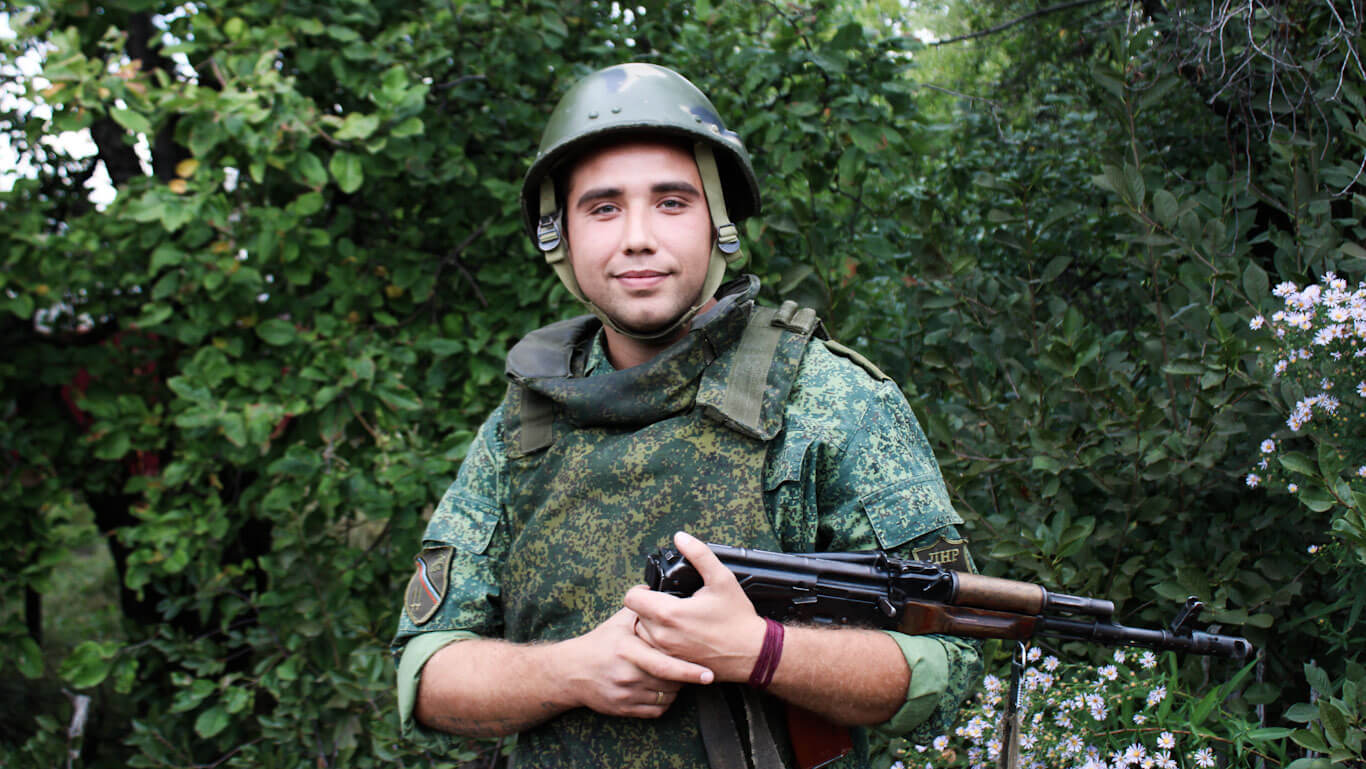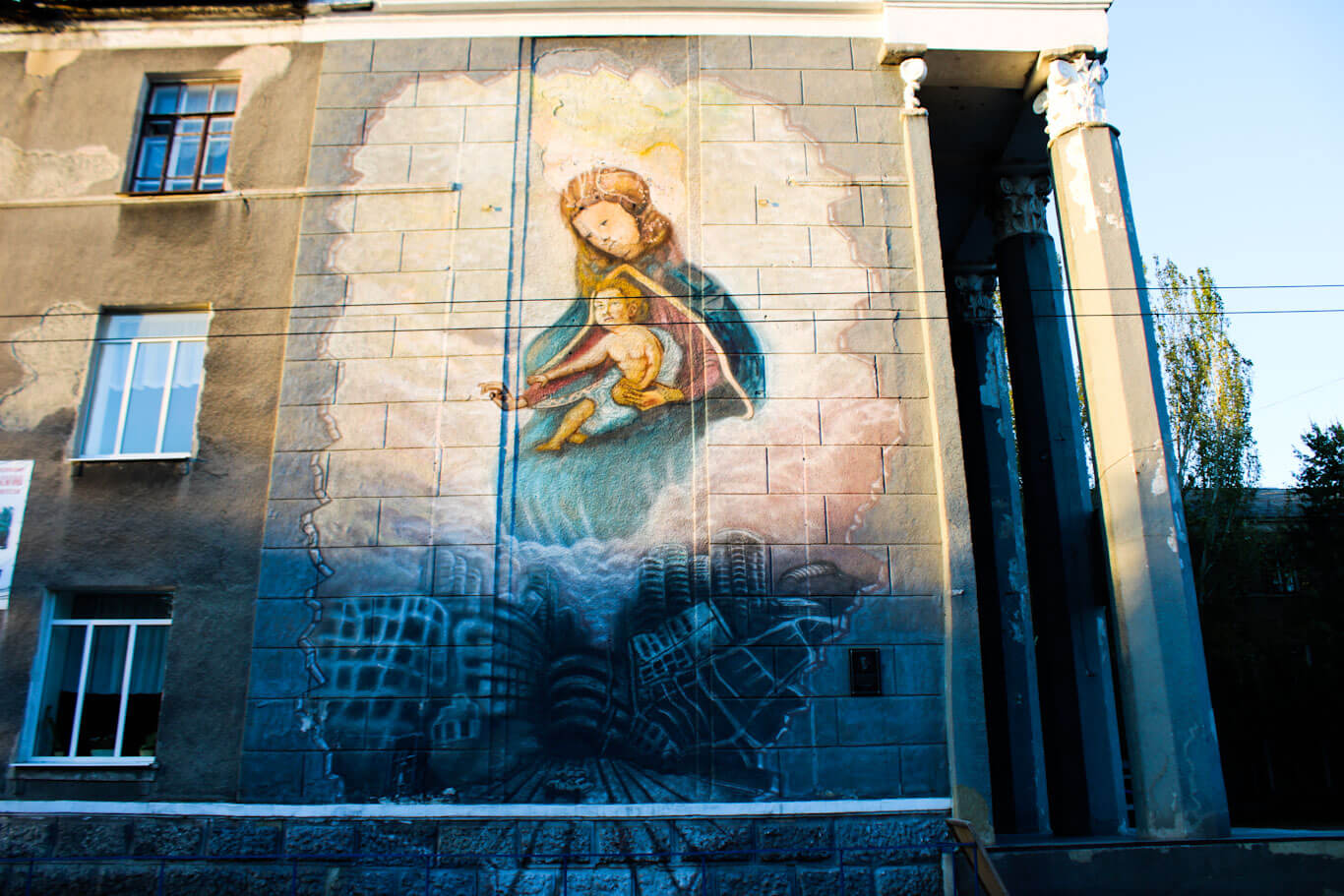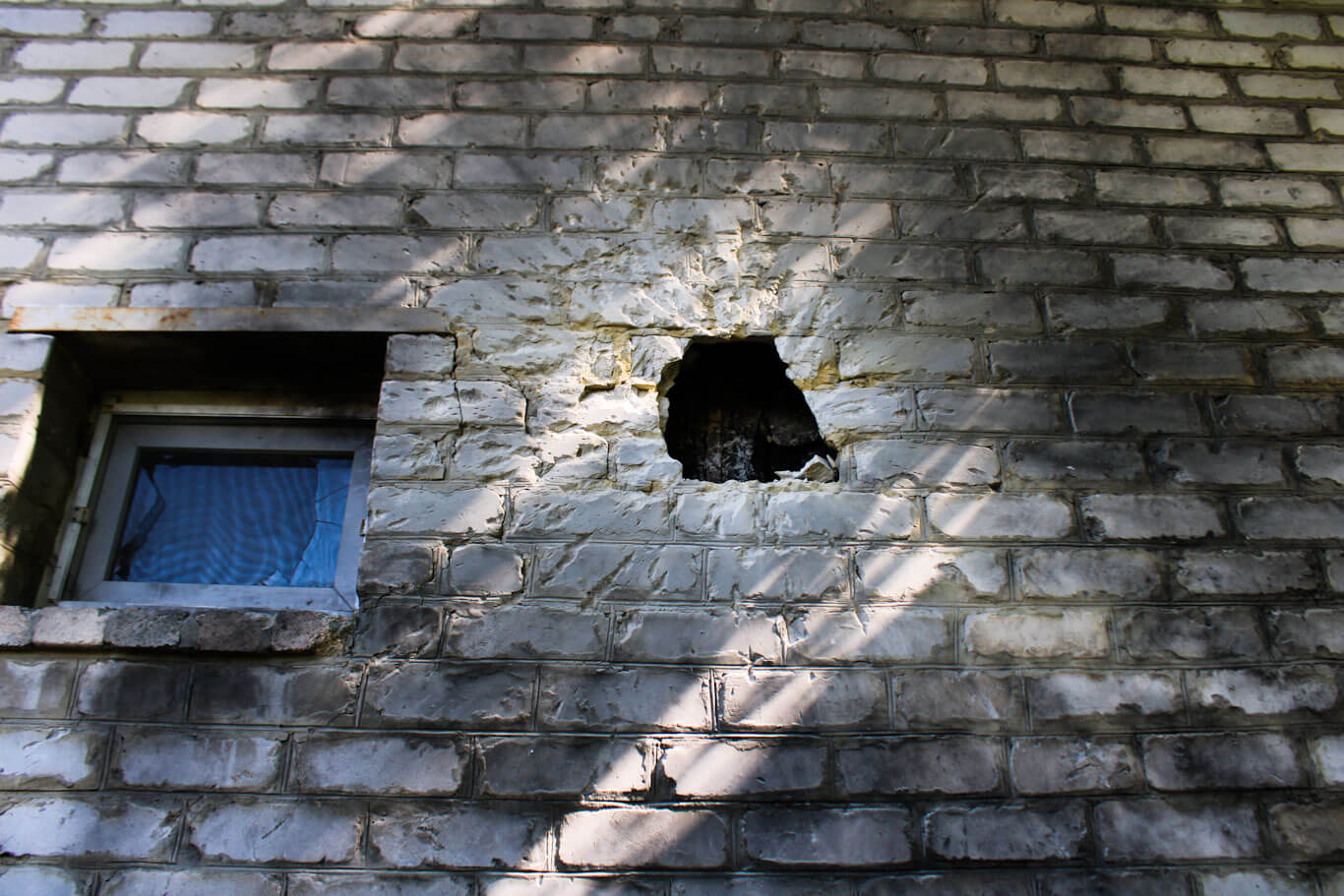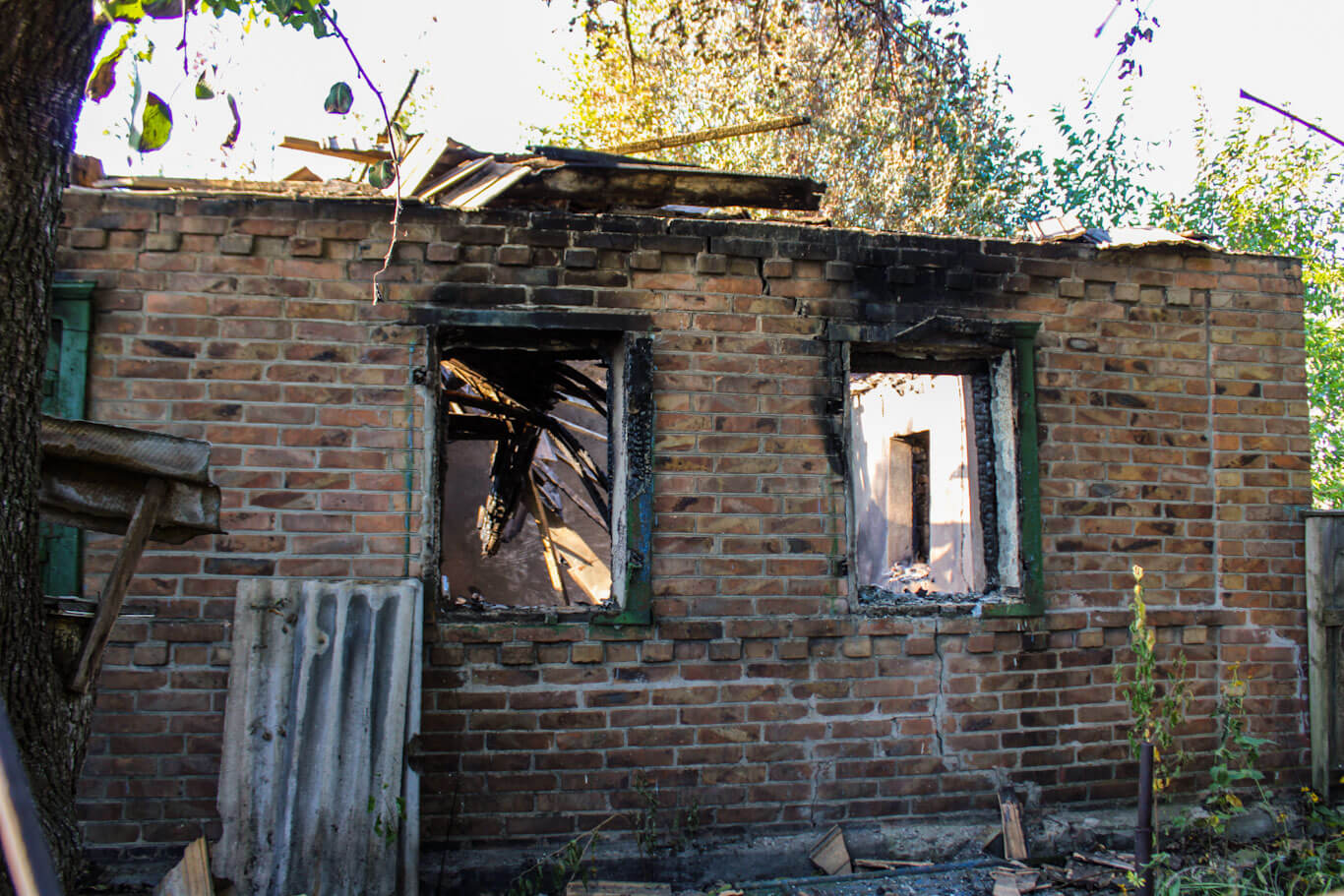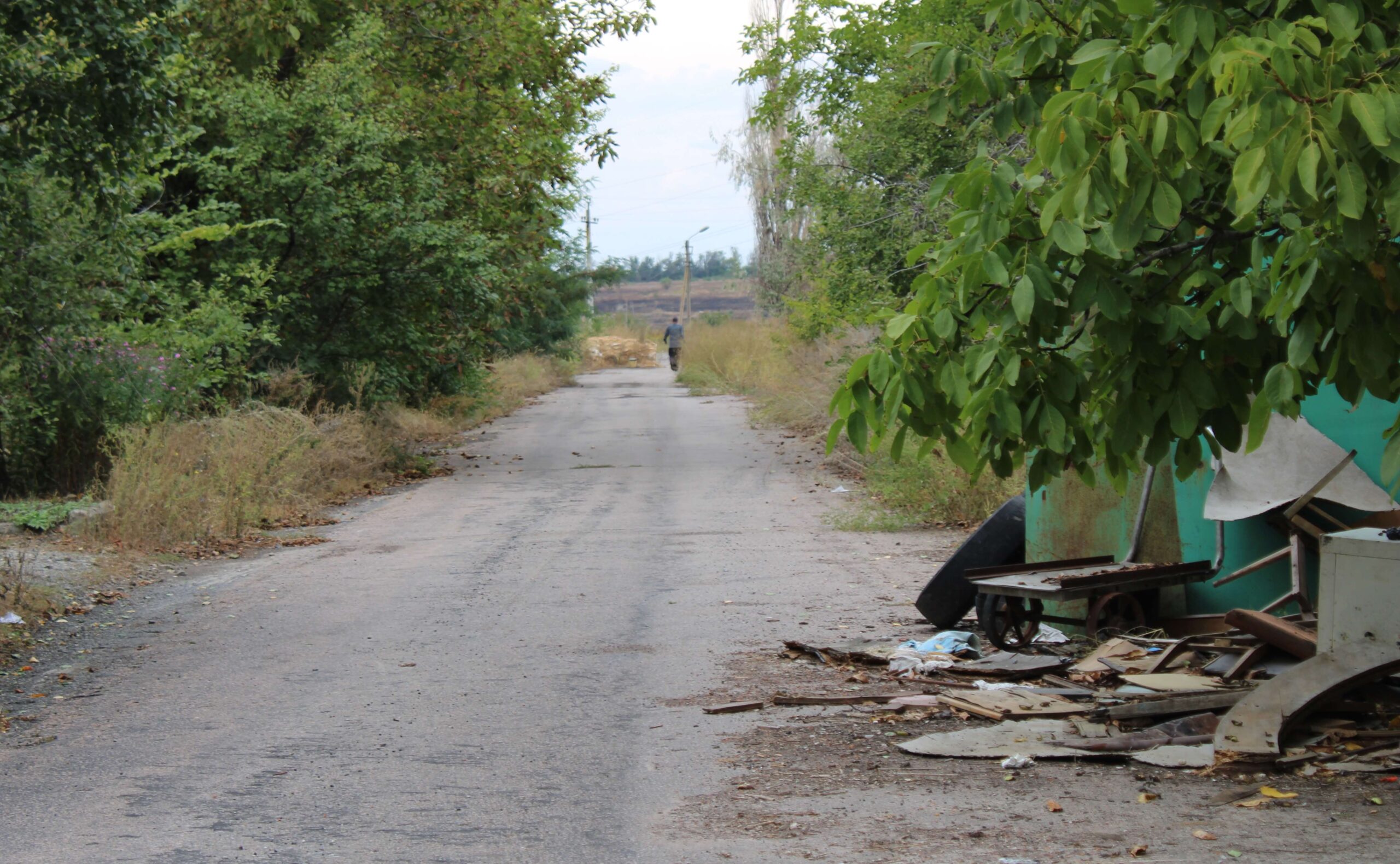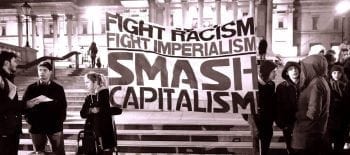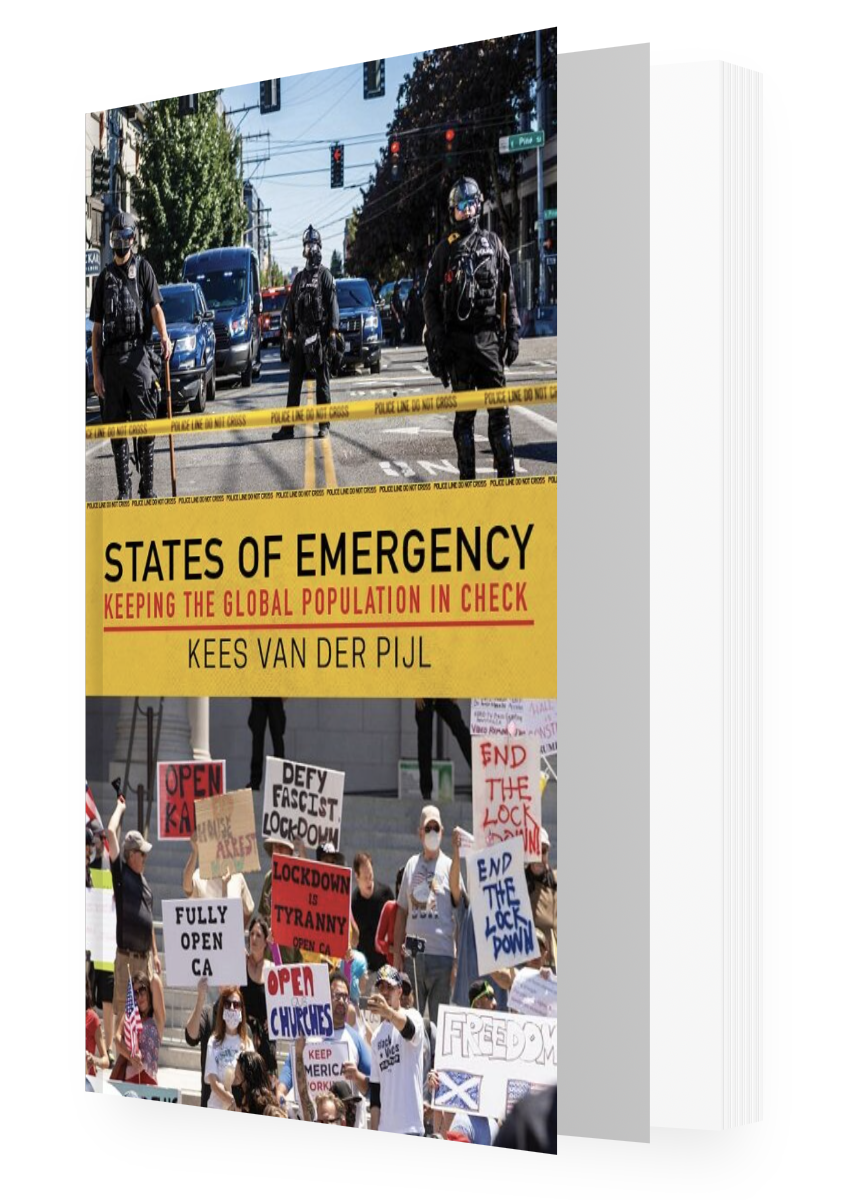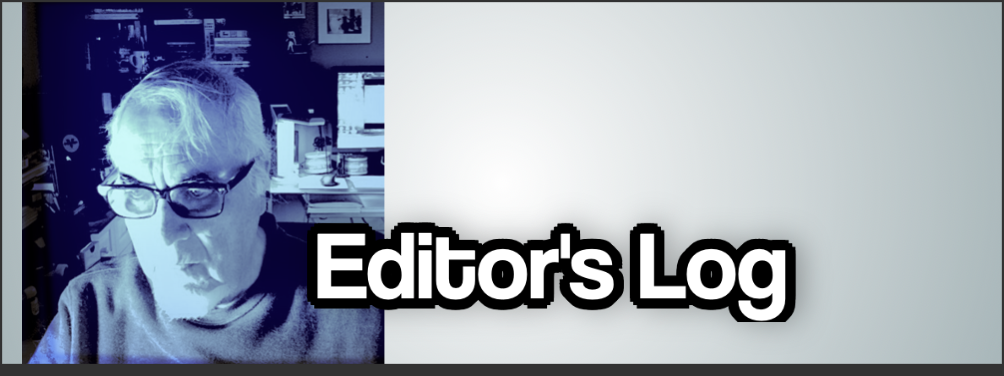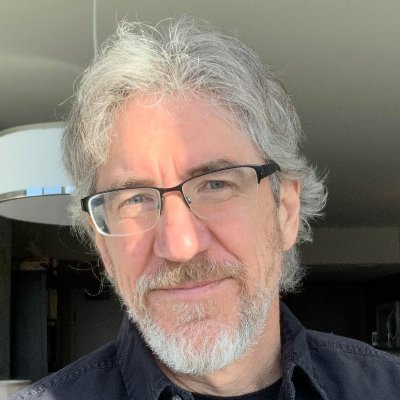Under Fire from Ukraine and Misperceived by the West, The People of the DPR Share Their Stories
by Eva Bartlett
MINT PRESS NEWS
| [premium_newsticker id="337867"] |
This is a repost. Originally printed on October 16th, 2019
Eva Bartlett traveled to the besieged Donetsk People’s Republic to see firsthand how residents are faring amidst a western-backed Ukrainian incursion.
Shadowbanning, suspension, DDoS attacks, and online content manipulation: independent news media is fighting a rise in attacks on internet freedom. We’re in a time where it is increasingly difficult to have your voice heard. Mint Press News and The Greanville Post are always adapting to find the best way to be there for you.
On September 2, I left the southern Russian city of Rostov-on-Don via minibus heading northwest to the border of the Donetsk People’s Republic (DPR) and on into Donetsk. For my first few days there, I rented an inexpensive apartment in the heart of the city. Walking on a long tree-lined and cafe-filled pedestrian walkway, life seemed normal. But I would soon find that for the people living in Donetsk, it is anything but.
I passed a cafe where a former DPR leader and military commander, Alexander Zakharchenko, was assassinated by a remotely detonated bomb in August 2018. He was beloved, and as I stood there, two women stopped to pay respects and pray.
Days later, at a transit hub in Donetsk, I met with Alexey Karpushev, a resident of the northern city of Gorlovka, an area hard-hit by Ukrainian bombing, and whose outskirts continue to be shelled near-daily.
A long line of mostly students extended around the corner waiting for the next available minibus to Gorlovka. After an hour of waiting, the minibus arrived and we boarded for the bumpy ride north.
Alexey deposited me at a hotel, a rambling Soviet-era structure just off a pedestrian area that during the evenings becomes crowded with families, lovers and friends strolling, and children bicycling.
In the morning he took me to a central park where a chess tournament was taking place. For the next five hours, fourteen adults and eight children played chess. A hundred meters away, an old but functioning children’s park with small amusement rides attracts more kids as the morning morphs into the afternoon.
In the tranquility and normalcy, it was hard to believe that Gorvloka’s central areas were terrorized by Ukrainian-fired bombs just a few years prior. “Summer 2016 was last time city center was bombed,” Alexey would tell me later. “We still hear the shelling, but it’s on the outskirts. People are sniped there, too.”
Gorlovka was hardest hit in 2014, especially on July 27, when the center was rocked by Ukrainian-fired Grad and Uragan missiles from morning to evening. After the dust settled and the critically-injured had succumbed to their wounds, at least 30 were dead, including five children, Alexey tells me. The day came to be known as Bloody Sunday.
Alexsey and I walked around the city, where he showed me the Bloody Sunday sites. We passed a busy bus stop on a busy street where residents were amassed waiting for their buses. This bus stop was one of the Bloody Sunday sites. As Alexey told me:
The largest number of victims happened near this bus stop. There were mainly babushkas (grandmothers) here, selling flowers and vegetables. They came under Grad strikes and they died.”
Hero Square, not far away, also came under fire: “There was mainly youth there, students. Several people died from the blasts, including the ‘Madonna of Gorlovka’, Kristina Zhuk, with her infant daughter Kira.” A mural just near the main city square depicts Kristina and Kira on Bloody Sunday, rising above the plumes of smoke and the bloodbath.
Not far from the bus stop, a monument commemorates the Gorlovka victims of Ukrainian bombings and sniping from 2014-2017. Near a sculpture of an angel, over 230 names fill the marble slabs, the first dedicated solely to children, 20 of them.
We walked on to Hero Square, the tree-filled park where Kristina and Kira were killed. In its center is a monument to those who died fighting in WW2.
As we stood near a tank installed “in honor of militiamen who died defending Gorlovka against Ukrainian troops from 2014 up to this very day,” we both remark on the irony: the park contains a monument to those who died fighting against Nazis in WW2, and a memorial to those killed by Ukrainian neo-Nazis from 2014 and on.
The following day, we visited the Soviet Army Square in central Gorlovka, where a ceremony was taking place marking the 76th anniversary of the liberation of Donbass from Nazis on September 8, 1943. While they commemorate the victory of decades ago, they have the memories of bombings by the Ukrainian forces in recent years. The outskirts of Gorlovka and surrounding areas continue to be shelled by Ukrainian forces.
The Mayor of Gorlovka agreed to meet with me. He told me he does his best to keep people informed, via his Telegram channel, with daily updates (in Russian) on Ukrainian bombings and violations of the ceasefire agreement (the latest having come into effect on July 21). After our meeting, he opened a second Telegram channel in English.
Censored Ukrainian war crimes
I received permission to enter some of the areas targeted by Ukraine and did so on September 12.
Just a few days prior, the Donetsk News Agency, citing a report from the DPR Office at the Joint Centre for Control and Coordination, reported:
In the period from September 2 to September 8, 86 ceasefire violations by Ukrainian armed formations were recorded. Overall, 918 rounds of ammunition were fired (8.5 tons or 99 boxes)…
[T]he enemy fired at the DPR 40 152mm artillery rounds and more than 260 120mm and 82mm mortar rounds. Two civilians were wounded and 23 houses and infrastructure facilities were damaged in the shelling.”
I was met in Gorlovka by Dmitry Astrakhan, a press officer in the DPR People’s Militia, who is fluent in English. He tells me we will go to a former mining area just northwest of the city, a village known as Mine 6-7, and also to Zaitsevo, a front-line village north of Gorlovka that has been hard hit by Ukrainian shelling.
As we drive, he advises me:
When you hear the whistle of a mortar, drop down immediately — to avoid the spray of shrapnel. Also, don’t go off the road: most areas haven’t been checked for unexploded ordnance.
Ukraine uses drones to drop explosive devices: it’s impossible to tell which drones are carrying out reconnaissance and which are armed with bombs. If someone yells ‘air attack,’ you need to run to find a shelter with a roof. When you hear the ‘outgoing’ call from the spotter, you have 10 to 15 seconds to run to a shelter.”
He explained the range of some of the heavy artillery Ukraine uses:
The 152 mm has a 25 km range. The Uragan multi-rocket launcher has a 30-40 km range. The Tochka heavy rocket/missile has a 100 km range. They stopped using the heavy artillery 152 mm for a while, but a week ago they destroyed many houses in three villages in the south of the DPR. They were 12 km from the front-line. It was around 5 a.m.; there were some people injured but no one killed. But a lot of houses destroyed.”
I asked Dmitry how he got involved with the DPR Press Office, as he had told me he wasn’t a journalist prior to the war.
I had a normal job and life. I wasn’t very political. In the beginning, people were mainly just struggling for our rights: the right to speak our language, Russian; the right to have education in our language, to keep the memory of WW2 — because Ukraine started re-writing history. They now consider those Ukrainian nationalists who collaborated with German Nazis heroes, and the Red Army occupiers. We can’t accept this.
I never believed there would be a war, I didn’t believe the Western world would allow this. I thought it would just be some protests, some compromises, but not war. I thought people were being paranoid at first, thinking we would be killed. But they were right, and when the war started, I knew there were things worth fighting for.”
He spoke of how Ukraine hides its shelling from the Organization for Security and Cooperation in Europe (OSCE) observers by doing most of it after hours (in the dark, when it is difficult to film) — later claiming that damage done to the DPR side was self-inflicted, or that Ukrainian forces were merely defending themselves, replying to DPR attacks:
The OSCE were attacked a week or so ago by a heavy anti-tank rocket launcher. Ukraine commits many war crimes, but manages to mask it. They are Nazis, but they mask this from the West. Few people understand in the West how close Ukraine is to becoming a full-on Nazi state.
They say that they are from Bandera Front, they are Ukrainian far-right nationalists. When a person from some Western country hears about Bandera, this person could not understand what Ukrainian authorities mean. But I do, I understand what they mean, I understand who Bandera was and what they really mean.”
Stepan Bandera was a Ukrainian political figure, Nazi collaborator, and one of the leading ideologists/theorists of the Ukrainian nationalist movement of the 20th century. Dmitry continues:
There is a Nazi state in the middle of Europe in the 21st Century. They are dangerous both for us and for the Western world. If they finish with us, they will do the same in the Western world.
Ukraine has a big propaganda machine, and the censorship of Western media helps.
I was raised believing in the Western ideals of human rights and democracy. And what do I have? I have no human rights. Ukrainian Nazis can kill me and they can go to the European Parliament and they will be considered heroes. They can kill without court, without justice, without anything.
Western countries support war crimes, support the killing of our people just because we speak our native language, Russian. That’s the only reason to kill us, just because we like Russia and speak Russian.
They can kill you. They consider all the journalists as Russian propagandists. Their military can shoot you and never face justice. That goes against my understanding of human rights.”
Mine 6-7 Area residents terrorized nightly
“Don’t film the soldiers with us,” Dmitry instructed as we drove. “They are afraid for their families because the Ukrainians sometimes take the families of the military as hostages.”
The road was overgrown with weeds, grass, and unpruned tree limbs. Maintenance is impossible during wartime. The positive side is that in areas close to the frontlines, such growth prevents snipers from seeing people are on the road.
“We’re very close to the front line,” Dmitry announced.
We got out of the car and walked down the lane to the first of a few houses in the area. Some residents agreed to have their testimonies recorded on video; others did not, believing that if Ukrainians saw their houses published on video, they would be targeted. Others are still worried about repercussions when they make the monthly, time-consuming trek to Ukraine to receive their pensions (involving slow bus travel, long lines, and the fear of being singled out for having spoken to journalists about their lives under Ukraine’s war).
A spunky 74-year-old woman, whose home has been shelled on more than one occasion, agreed to be filmed and took me to the back of her house to show me the latest damage. There were two strikes there; her basement is destroyed. The outer wall of her house is damaged and leaning. She worries the wall will collapse, as with a similarly damaged front wall, and worries about how she’ll be able to patch up the damage before winter comes. She lives alone.
“I’m afraid at night; that’s when they start shelling heavily,” she tells me. The nights are terrifying, hell for her. I ask if she ever considers leaving. “To where? I have nowhere to go. My husband is dead.”
I asked her who is firing these shells. She gestured in the direction of a village under Ukrainian control.
I asked if things had changed since Zelensky became president of Ukraine.
“It became worse. Before, I at least had windows. Now, they constantly shell, especially in the evening and early morning.”
I asked if she feels the OSCE are being effective. “No, they change nothing, especially not here.”
She says they can’t get cell phone signals there. I ask how she would call for an ambulance if needed. She replies that someone in the military would call for medics, but that the ambulances can’t come that close; it is too dangerous.
When I asked what her native language was, she replied immediately: “Russian! But,” she added, “here, we speak both languages; it wasn’t a problem.”
Dmitry explained that Ukrainian forces are roughly 600 meters away, and half encircle her area. A roundish hole in the wall is a ricochet from Ukrainian heavy machine-gun fire, he explains.
Ukrainian forces are using 82mm mortar shells in violation of the Minsk Agreements, he says: “They connect the mortar shell with the engine of a grenade launcher. That’s how they trick the OSCE: they don’t use the mortar itself but they use the mortar shells with the RPG [a type of small-arms grenade launcher designed to destroy armored and other targets] engine.”
This works, because RPGs themselves are not prohibited under Minsk.
We walked with the two officers down the lane to the last house, which was apparently still inhabited despite being only around 500 meters from Ukrainian forces. One of the walls of the house had a sizable hole in it from an RPG-fired 82 mm mortar.
One of the officers said: “The man who lives here was in the bathroom the moment the mortar hit.” The bathroom window is close to the mortar impact. “Luckily, the thick walls prevented him from being directly injured, although he was knocked over by the shock-wave.”
The officer showed me a bucket full of shrapnel he collected from the various mortars and other munitions fired by the Ukrainian forces toward these homes. It’s fairly full.
As I photographed the damaged wall, Dmitry cautioned me to step back, as we were not yet wearing body armor or helmets. “We’re very close. They can’t see us because of the trees, so their snipers don’t know to shoot. But still, we have to be careful.”
We then drove to a school whose basement is now being used as a makeshift shelter. There I met an elderly couple who had been living in that dank basement for six years, since their home was destroyed.
Outside of the battered school, Dmitry commented: “You see, each dot on the wall is from shrapnel. Of course, there were direct hits also.” A hole in the roof of the building shows where one of the direct hits occurred.
We walked into the basement, where a musty stench overwhelmed us.
Sitting in one corner of the barebones room — what possessions they were able to salvage piled near them, and asking me not to film their faces — were an older couple who explained that their home was destroyed by Ukraine: two direct hits with heavy artillery.
I ask who they blamed for the war. They blame Yanukovych; they want him to be hung. Many people are guilty but he is the main person.
I asked their opinion on the work of the OSCE:
Nothing good. They drive around here, but nothing changes. Before the ceasefire, when Ukraine would shell, the DPR military would respond and the Ukrainian side would stop shooting for a couple of weeks because they were afraid. Now, we are in a ceasefire; the Ukrainian side shoots whenever they want and no one holds them accountable.”
We leave the couple in their six-year-long temporary basement home and drive back to the outskirts of Gorlovka, to prepare to go to Zaitsevo, another heavily targeted area.
Some of the defenders of Zaitsevo were finishing their lunch break, so we sat and talked as they smoked cigarettes and drank tea. All were from the Gorlovka area and married with children. They have been defending this position since 2015. Some used to work in a mine, one was a long-haul truck driver, and another worked restoring old buildings.
I asked them why they chose to fight.
“Because of the killing of people in Odessa. That’s what made us join the military, to defend our area,” one soldier said.
I followed with: “Are you aware of how Western media is portraying the war? What’s your opinion?”
“I don’t know exactly but I guess they depict us as evil men. No one cares about what we want,” he said.
“What do you want?” I asked. He answered:
We want peace. We want to go back to our homes. Six years of war is too much for a person. We are friendly and peaceful people, we are happy to meet anyone, but without weapons. We remember the July 27, 2014 bombings, and other 2014 shelling, entire families killed. We remember all of them.”
One of the soldiers turned the questions my way, asking: “How did Western society react to the use of Nazi symbols in Kiev and Maidan? What did Western society think?”
I replied: “Most people don’t know, thanks to our media.”
They then got to talking about the foreign weapons and equipment they’ve found from captured Ukrainian soldiers. Polish mortars, Bulgarian RPGs, Western machine-guns and reconnaissance equipment:
We found them in Zaitsevo. It’s hard to find sniper rifles, you generally don’t capture a sniper. But a lot of photos have been published by stupid soldiers from that side. They’re using Western sniping rifles.”
“They use the fourth generation of NATO night vision devices,” another soldier told me. “Many mercenaries from Poland fought on the other side. We hear them speaking on the radio in Polish. Also many Georgians; we saw the Georgian flags.”
As lunch break came to an end, Dmitry and I headed to Zaitsevo, with Gyurza, an officer in the DPR People’s Militia.
We stopped in Zaitsevo town center, 800 meters from an NW front-line, and 1.5 km from the northern front-line.
There, we spoke to Irina Dikun, head of the administration of Zaitsevo and, as it turns out, a remarkably courageous woman. She told me:
Here, we are not living, we’re surviving. Those who could leave, have left. Those who remain are mostly elderly. The shelling began in 2014 and hasn’t stopped till now. Six years of constant shelling. This morning at 6 a.m. there was a big blast [a 120 mm mortar (prohibited under Minsk) on a street where civilians still live, I later learn].
None of the ceasefire agreements (24 or 25) reached here. We’ve not had more than 1 or 2 days of ceasefire.
The town was roughly 3,500 people before. Now it’s about half that, 1,600 including 200 children. There was a school, and a kindergarten before, but they were both destroyed by Ukrainian artillery. So now the children go to a district of Gorlovka. They are destroying the town street by street. They take one street and destroy it house by house. Then they turn to another street.”
I asked about access to emergency care:
The paramedics don’t go farther than this building; it’s too dangerous to go further. If somebody needs medical care near the front lines, someone has to go in their own car and take them to a point where medics can then take them to Gorlovka. The soldiers also help civilians who are injured.”
Dmitry added that Ukrainian forces have fired on medical and fire brigade vehicles. I asked if anyone had died as a result of not getting timely medical care. Irina replied: “A woman died due to huge blood loss because no one could reach her house to take her away in time. She was injured in the shelling and bled to death.”
Irina said she didn’t have a car at the time, but since then — during a time of war — she got her driver’s license, and also took First Aid courses, to help people in case of an emergency, both medically and as a driver: “Every local leader has my number. If something happens, they call me.”
Irina is often among the first to arrive at the scene of shelling, documenting the resulting damage. I mention video footage I saw recently of a burning house in the area. She replied that she had taken it. When I later went to that area, I saw that the house was only 500 meters from the front-line.
I asked her to describe a normal day in Zaitsevo:
At 7 a.m. most people go to work, schools, kindergartens. It is fairly calm through the afternoon. Around 5 or 6 p.m., the shelling begins and gets worse and worse throughout the night. The terror continues until around 6 a.m.
But sometimes, they shoot at the school bus. They know when it goes and they try to hit it. One DPR soldier died while shielding a child in front of the bus. There was an artillery strike; he heard the whistle and shielded the child with his body.”
She added that nearly twenty people in the town had been killed, and over sixty injured. All civilians.
I asked her whether she or other officials had filed complaints to the OSCE or any international body about the actions of Ukrainian forces:
Yes, constantly. But nothing changes. It seems that international organizations have no power to do anything regarding the Ukrainians, because they still shoot. There were a lot of ceasefires signed in Minsk, but nothing changes here.”
I asked her whether she had a message for Western governments supporting Ukraine’s war on Donbass:
I want them to open their eyes and see there is no Russian invasion here. Just local, normal, peaceful, people who wanted to live another way. And we were not afraid to tell everybody how we want to live. In the beginning, we didn’t want to make a Republic; we just wanted to be autonomous. But we were not listened to. Ukraine moved its armed forces against the people and used their artillery against us.
Poroshenko once said that our children will spend their childhoods in the basements, and that’s what has happened. A lot of children lost their normal childhood, going to school in constant shelling. My youngest son already has grey hair. He has been under heavy shelling attacks ten times.
I want Western leaders to open their eyes and see this. Western weapons are used to kill us. We don’t wish for any person to live through what we are living here now. What is here is something you don’t wish for your enemy.”
We then moved forward, driving along more overgrown roads battered by the war.
We stopped and got out of the car. Dmitry said: “We are near the checkpoint, but Gyurza doesn’t want them to see us.” We continued on foot.
According to Gyurza, Ukrainian forces were just 500 meters off in one direction and 600 meters in front of us. We walked past a home with a gaping hole in its roof but still inhabited. “They need to replace the roof before winter, or they can’t live there.”
We passed a burnt-out home and Dmitry said, “See the smoke? The house is still smoldering. It was hit two days ago by an artillery strike.” This was the house from Irina’s footage.
Walking on, we passed an unexploded 82 mm mortar buried in the ground. It’s fresh, Dmitry notes; the shell is still yellowish, so it hasn’t been there that long.
We stepped into the ruins of the burnt-out home. Brick walls remained, the tin of roof was on the ground in ashes and a tree branch still smoldered overhead.
As I filmed around back, I was warned not to step off into the grass as there could be unexploded shells.
Passing another home, Dmitry points, and comments: “They drew an Orthodox cross on the gate. They hope it will protect them from the firing.”
Back in the car, as we drove, on either side of the lane, houses were either burnt out, badly-damaged by heavy machine gunfire or shelling, or boarded up and evacuated.
We parked the car again and walked towards a school that had taken a beating. Dmitry explained it had been nearly destroyed by heavy artillery strikes. With the school behind him, Gyurza speaks.
Since 2014, the defenders of Zaitsevo have defended this place. The school is a very important strategic point: it is surrounded by Ukrainians from two sides.
In October 2014, when the school was still functioning, we brought computers, paper, pens, and other things for the students. Then, we withdrew 1.5 km away, to not be a military presence near a school.
Three or four days later, Ukrainian soldiers came to the school and took all the supplies the People’s militia had brought the students and destroyed it all in front of the children. After we came back and saw everything we’d brought the students was broken, we decided to protect the school and the children.
On October 28, 2014, seventy Ukrainian soldiers, with two heavy armored carriers (BNP) and one tank, tried to go to the village center to capture the administration building.
Because of the trees and narrow roads, they couldn’t use the tank. But they did advance with the two BNPs. Although there were many more of them than us, they weren’t able to capture Zaitsevo; we defended it. They were forced to retreat, but they didn’t retreat fully.
That was at the time of the first Minsk agreement, and a ceasefire, but the Ukrainians still tried to capture Zaitsevo. We realized they wouldn’t leave, and wouldn’t follow the agreement, so we started making trenches and a defense line to protect the village.
After the second Minsk agreement [in February 2015], it was decided there should be a Buffer Zone for three kilometers. So, we remained in our positions and maintained the Buffer Zone from our side.
In October 2015, we saw that the Ukrainians were starting to move their trenches forward. They dug through the buffer zone and continued to dig forward towards our position.
In November 2015, they started shelling Zaitsevo. At that time, they didn’t shoot during the day, but every night they started shelling. Each evening, after the school bus left the school, the Ukrainians started shooting with light arms, then 82 mm mortars, and then at night it was hell here, really hell.”
Gyurza was interrupted by another officer who told us to move down the lane further from the school. Where we were standing was too risky.
Gyurza then continued:
One day at the beginning of 2016, Ukrainians started shelling the school when the children were inside. The children were evacuated immediately: they were led to a window and into a bus, and then on this road, which was at that time safe. No children were injured; they were protected by the People’s Militia while being evacuated.
We made positions to protect the town from Ukrainians trying to push forward. After we made our defense line, we didn’t move a meter forward: we do everything according to the (Minsk) agreements. But the Ukrainians pushed forward through the Grey Zone, which is a military line.
Now in some areas, the distance between the front positions is 300 meters, and in some areas, the distance is just 120 meters.
In May 2018, they used tanks to fire direct hits at the school, destroying the gym area of the school. It was their attempt to break the front line and enter the town, but they weren’t able to.
We’re still holding our position, not a meter forward or back. Ukrainians still try to wage an offensive forward, but they aren’t able to do so. The Ukrainian government doesn’t obey the agreements that they signed.
If they did everything according to the agreements, people could live here and children could play in the schoolyard. Now we can’t even stand near it; it’s too dangerous.
People took their children away from the town because of the constant shelling, and because some of the shells didn’t explode so it’s very dangerous to walk in the area. Also, parents don’t want their children on the streets under the heavy machine-gun fire.
I’ve seen children die under Ukrainian attacks. I saw my friends die from Ukrainian shelling. I’ve seen too many dead civilians. I will never surrender, there is no way to make peace with the Ukrainian side without our army.
Their biggest mistake was coming here and using weapons against civilians. Tell your government not to train and arm Ukrainian soldiers.”
As we drove away, house after house we passed had its walls blown out, some covered in plastic, some covered with wood, one lined with logs.
Dmitry commented: “There’s no one on the road now. Around 5 p.m., they start hiding in their homes, because the shelling can start now.”
We stopped again in Zaitsevo’s main square and took a group photo, clad in body armor. Dmitry explained that custom dictated that photos should be taken after safely returning from the front line.
In spite of the places I’ve lived and reported from, including in close proximity to terrorists in Syria and being repeatedly shot at with live ammunition by the Israeli army, this the first time I’d worn body armor.
As cumbersome as it was, I think to myself, these locals, subject every day to Ukraine’s bombings, snipings and heavy machine-gun fire, do not have this lifesaving luxury. Nor, for many, the luxury of fleeing to an area less prone to the bombing. So they remain, patch up their homes if they can, and endure the terror unleashed upon them nearly every day and night.
The front-line village of fifteen residents
North of Donetsk, I visited Krutaya Balka, a village on the outskirts of Yasinovataya, another heavily hit area.
Dmitry explained that the Krutaya Balka was divided into two parts: one exposed to the front line (we couldn’t go there as the road leading to it was under sniper fire); the other slightly further away, home to 15 mostly elderly people who still lived there.
We stopped in Yasinovataya at a DPR military center and met the commander of the Territorial Troops, a former Russian soldier who had traveled to volunteer in the DPR of his own volition and eventually married and settled here. Evgeniy, who goes by the nickname “The Bullet,” agreed to talk to me. He made coffee and we sat in his office at a large table housing a chessboard, where he described the area in general and his own story.
He estimated that before the war, there were more than 17,000 people living in Yasinovataya and that now the number was around 13,000. He continued:
The Yasinovataya district was a railway center before the war. It was not a big city, but it was one of the most important railway interchanges. There was also a large plant that produced mining equipment and machines.
There were a lot of agricultural fields, as well as two Donetsk water filtration stations and the Vasilyevsky pump station, which is situated directly on the line of demarcation. The line of demarcation passes along the town’s border.
Yasinovataya is a district of military action. People sharply changed their neutrality during the active phase of the standoff between the self-proclaimed republic and Ukraine. They switched from civilian life to military life. The Ukrainian forces entered Yasinovataya. Civilians here saw directly how it happened, and they found themselves direct participants in the conflict and military actions, not IDPs [internally displaced persons], nor the encircled.
There was a corridor to the other side [to Ukrainian territory]; whoever wanted to leave could do so.
Here, the front line passed through the private sector. The city, of course, is built up, but it is also fields, dachas [country homes]; it is the suburbs. And the suburbs are being constantly shelled.”
I asked about allegations that Ukrainian forces had targeted schools or other infrastructure.
Evgeniy replied that although he’d been in the Republic for a long time, he had only been in his current position for a little more than a year, and wasn’t aware of any such cases during the past year.
Dmitry commented: “Well, there was the shelling of a retirement home.” Evgeniy pressed on: “And before I was here, they shelled a nine-story building, a residential area. But, the city administration functions, the destruction was repaired.”
I asked why he, as a Russian who had finished military service and was living a civilian life, chose to come here. Evgeniy answered, “I came to Donbass so that what’s happening here does not happen in Russia. Also, I have a sharpened sense of justice.”
I asked him if he feels that Russia has an obligation to end the war, to which he responded:
Russia, as an independent state, doesn’t owe anything to anyone. The only guilt of Russia, in my opinion, is that nationalism — which, in the period of Ukraine’s separation from Russia started to actively develop here. I mean the fascism, it wasn’t crushed in the past.
Ukrainian nationalism became so impudent that the Odessa massacre was permitted. Everyone speaks about Donetsk and Lugansk, while such an anti-Maidan movement also emerged in Kharkiv [in northeast Ukraine], which was strongly quashed, as it was in Odessa.
The people here had no other choice: it was either enter into a ghetto or for civilians to take up arms to defend their freedom.
The first and subsequent leaders of the Republics were a spontaneous thing. They were not self-appointed, they were indeed appointed by the people, and they pronounced the will of the people. This was at the very beginning, in 2014.
Ukraine chose the violent option and tried to crush the will of the people, to impose its nationalism.
For Russia, as the older brother [a term of endearment], there was no other choice. It started to help from the beginning of the conflict [in Donbass]. Russia was the first to bring humanitarian aid here. Russia was the first to speak about negotiations.
From 2014 to 2019, Russia has affirmed that this conflict [in Donbass] is an internal one, that we [Russia] don’t intervene — we are spectators — and that we don’t allow the Minsk Agreements to be disrupted. Ukrainians should solve it with the DPR/LPR.
Russia does everything possible o bring to reason and to disengage the sides. Russia shouldn’t do anything [in terms of intervention]. It’s not Russia’s war.”
The Donetsk journalist with whom I was traveling chimed in:
I don’t understand people who expect Russia to take on our fight. The people of Donbass are independent and smart enough to decide for ourselves. Although in 2014 we didn’t have enough resources to fight on our own, it’s not good to expect Russia to do something.
We in Donbass should be very grateful to Russia for any kind of support, but at the same time not try to force Russia to do something, not say what Russia ‘must’ do.”
Before we left for Krutaya Balka, Evgeniy invited us to have lunch in the canteen upstairs. Observing the camaraderie over lunch, it was clear that “The Bullet” had the respect and affection of the soldiers sharing his meal.
In Krutaya Balka, at a home 800 meters from the front-line, I spoke with an engaging older couple. The man waved at me and asked with a grin what’s happening in Canada. Days before, their area was shelled for an hour, 26 shells fired by Ukrainian forces.
I began with the most basic question: how had they been affected by the war? The man replied:
To say just in one word that it affected us is like saying nothing. In 2014, my father-in-law, he was 90, he was lying down — he couldn’t walk, he was invalid. A mortar shell landed on the road, and the shock-wave smashed the glass inwards into his house. He didn’t understand what happened, he said to me: ‘Who is this hooligan who broke my window?’
He was badly injured when he was 19, in 1944, becoming invalid, and he died during this current war.”
The woman added, “In 2014, our home was badly damaged. In 2016/17, we were left without glass, so we covered our windows in plastic.”
In recent months, they both say, “it is rare when it’s calm here. There is constant shelling or heavy machine-gun fire.”
I ask why they stay, knowing the answer. “Where can we go?” The man adds: “If we leave our house, it won’t still be here when we come back.”
On September 7, heavy machine-gun fire hit the area, it began in the evening and lasted through the night. “A fire started in the attic. It’s good that we were at home; if we were not…” Their home might have gone up in flames like so many others in the area.
I asked about improvements post-Zelensky. The man laughed: ”Don’t mention Zelensky; he is a clown. The circus has gone but the clown remained. No, the situation hasn’t improved; in fact, it became worse.”
I asked why they believe Ukraine is bombing them. The woman replied:
Once I responded to one journalist by saying that we are shelled because the U.S. is fighting against Russia. The journalist responded by saying that this view is too global. But I said, ‘What’s wrong?! They need our territory. It’s the U.S. vs Russia.’”
When I asked whether they support the people’s will to possibly join Russia, the couple both responded, “Yes. There is no going back.” The man added, “I want to live as long as God allows me, and becoming a part of Russia is a way for me to survive.”
Further down the road, I met a man who was about to walk down the lane that I had been cautioned to avoid due to the risk of being shot by Ukrainian snipers. I was wearing, for the second time, the body armor Dmitry had provided. The man I met was only wearing a button-down shirt.
He didn’t want to be filmed and told me:
After the last interview, Ukrainians shelled my house directly, burned part of my house. I’m alone there, for the past four years. To go to my home, I have to walk to an area exposed to sniper fire. I was shot in my leg. And many times I had to drop to the ground when sniper fire started.”
I asked why he doesn’t leave in the face of such danger: “I don’t want to. It’s my home. I thought the war would be finished quickly but it kept going.”
Then he walked down the center of the lane into the range of potential sniper fire, and hopefully back to his home.
A little beyond that I met a man standing outside of the home he shares with his wife.
I asked whether his home had been damaged and he laughs: “Many times. Which house hasn’t been? The roof, the wall… from mortar fire and heavy machine-gun fire.”
His replies are in line with those of the others I’ve spoken to: things got worse after Zelensky became president; the attacks are daily; where would he go? He is in favor of joining Russia.
He continued, asking rhetorically:
“We should go to Ukraine, which damaged my house? I’m Russian, this is Russian land. Everyone who knows history knows this. Of course, I want to join Russia! In earlier times, before the war, I didn’t care either way. But after all, Ukraine did what it has done; absolutely I want to be a part of Russia. I can’t imagine being back in Ukraine. Anyway, most of the people here would be killed as ‘separatists.’ A known Ukrainian politician [Boris Filatov] said: ‘At the beginning, give them what they want, later hang them.’
I asked him if he had anything to say to a Western audience. At first, he said there’s no point, people already know, the West gives money to Ukraine… “The snipers use U.S. rifles, if they gave less money it would be better.”
But later in our conversation, he added:
Going back to the question of a message to the West…You remember WW2. Why do you support Nazis if you remember WW2? Why do you now support the Nazis? Openly Nazis. They wear swastikas. Why is Europe silent? Everyone comes here and agrees with me, but nothing changes. OSCE shouts, but when they are under fire, they are silent, they don’t say that Ukraine attacks them.”
Later, I interviewed Ryka, a young-looking DPR platoon commander who accompanied me to the area. She began: “When it began, it was peaceful rallies, he supported these… then it turned to war. I was against the coup in Kiev, I didn’t support the Nazi regime. That’s why I joined peaceful protests.”
Ryka married during the war and has two children and the full support of his family regarding his role in defending the DPR. He says, “My father served and died in battle for Donetsk airport, in January 2015.” His home is under Ukrainian occupation, he says. He fought from the beginning, at most of the major battles in the DPR, and finally here.
I asked whether he is aware of how Western media portrays those defending the DPR:
Of course the portrayal is negative. They don’t see it with their own eyes. You came here, but very few people come here to understand personally and talk with me. Most see it only from the Ukrainian point of view. The people who support Ukraine and the Ukrainian army should come here and talk with civilians, to understand what the civilians really think about the Ukrainian government and the local government — whom do they really support, and how much did they suffer. Maybe if they see, they’ll change their minds.”
He elaborated on the underreported behavior of the Ukrainian forces:
I know people who when the Ukrainian army came to the city, were taken from their homes to secret prisons in Mariupol or Kramatorsk, and were badly tortured.
I spoke with such people after they were exchanged or became free. They were civilians, but just because they supported the protests, in the beginning, they were taken.
I know a guy who was imprisoned in Кurakhovo. Ukrainians crucified him on a cross with ropes, and turned him upside down, drowning him in a pool, torturing him.”
These are not isolated incidents, as made clear by the testimonies from other Ukrainian torture victims.
A final observation
Just under three weeks after I arrived, I left the DPR. But in my last days in Donetsk, as I walked around, I came across a statue of Taras Shevchenko, a famous poet and writer who wrote in Ukrainian in the 1800s. In Gorlovka, I also saw such a statue. Alexey Karpushev pointed out:
We in the DPR did not destroy statues like this. We don’t hate the people of Ukraine. But in Ukraine, they destroyed statues and memorials of the Soviet military leaders who liberated Kiev from German Nazis.”
Indeed, even in front-line areas, when I spoke with suffering DPR residents, the overwhelming sentiments I got were desires for an end to the war, for peace, also for their independence; but — with the exception of the older man living in the school basement saying that Yanukovych should be hung — no overt hostility to Ukrainians themselves.
Yet within Ukraine, neo-Nazi battalions have oppressed, murdered and committed unspeakable crimes against Ukrainian citizens, and continue to wage war against civilians in Donbass.
This is the Ukraine the media won’t tell you about, a state that can slaughter and maim civilians in the DPR and destroy their homes at will without repercussions.
Western nations are not only politically backing Ukraine, but some, Canada for example, have elite military and intelligence on the ground training Ukrainian forces, who then go on to not only battle DPR soldiers but terrorize and murder civilians.
On October 14, the Donetsk News Agency reported:
Ukrainian forces violated the ceasefire 150 times this week, firing nine tons of rounds, said DPR People’s Militia Mission to the JCCC.
Over the week, from October 7 to October 14, 150 ceasefire violations were recorded. DPR towns were targeted with 1,429 rounds with a total weight of 9.2 tons, or 162 ammunition boxes.
Kiev forces used 152 mm artillery, mortars, tank guns.
A civilian was seriously injured, 33 residential houses and infrastructural facilities damaged.”
Feature photo | DPR Peoples Militia Platoon Commander Ryka poses for a photo with his rifle. Photo | Eva Bartlett
 Eva Bartlett is a Canadian independent journalist and activist. She has spent years on the ground covering conflict zones in the Middle East, especially in Syria and occupied Palestine, where she lived for nearly four years. She is a recipient of the 2017 International Journalism Award for International Reporting, granted by the Mexican Journalists’ Press Club (founded in 1951), was the first recipient of the Serena Shim Award for Uncompromised Integrity in Journalism, and was short-listed in 2017 for the Martha Gellhorn Prize for Journalism. See her extended bio on her blog In Gaza.
Eva Bartlett is a Canadian independent journalist and activist. She has spent years on the ground covering conflict zones in the Middle East, especially in Syria and occupied Palestine, where she lived for nearly four years. She is a recipient of the 2017 International Journalism Award for International Reporting, granted by the Mexican Journalists’ Press Club (founded in 1951), was the first recipient of the Serena Shim Award for Uncompromised Integrity in Journalism, and was short-listed in 2017 for the Martha Gellhorn Prize for Journalism. See her extended bio on her blog In Gaza.

[premium_newsticker id=”211406″]

This work is licensed under a Creative Commons Attribution-NonCommercial 4.0 International License

